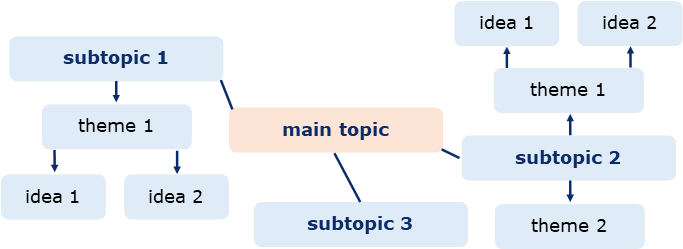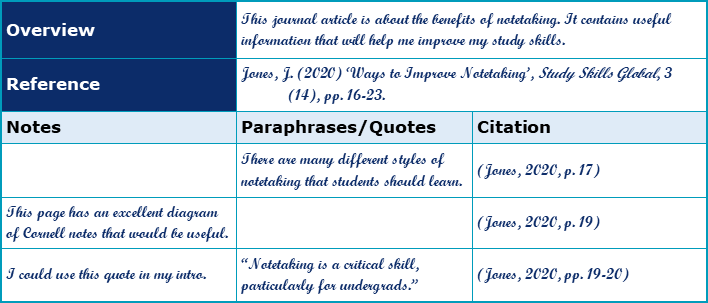Which 5 academic notetaking methods are best?

This is the second of three chapters about Notetaking. To complete this reader, read each chapter carefully and then unlock and complete our materials to check your understanding.
– Review the concept of notetaking in academic contexts
– Introduce five methods for taking notes effectively
– Study diagrams that explore the five notetaking techniques
Before you begin reading...
-
video and audio texts
-
knowledge checks and quizzes
-
skills practices, tasks and assignments
Chapter 2

In Chapter 1 of this reader, we introduced the concept of notetaking as a helpful academic study skill. We discussed how notetaking can develop language ability, critical thinking and subject knowledge, and we explored some of the many situations in which quick and effective notetaking may be needed by students (such as in lectures and seminars). In this next chapter, we introduce five types of notetaking that may be useful for students in their studies. When exploring each type, remember that notetaking is a very personal process and that how you take notes may involve a number of techniques – perhaps even your own unique style.
Method 1: Mind Mapping
One common method of notetaking that’s particularly useful during the brainstorming stage (such as when you’re coming up with ideas for a presentation or essay topic) is called mind mapping. Mind mapping may be done digitally or by hand and usually involves starting with a central idea or topic and then adding additional ideas, topics or themes in surrounding clusters, indicating the various relationships between those items using lines, arrows, colours and font sizes:

Some useful (and free) online mind-mapping software available to students are Compendium, Freeplane, Wisemapping and Semantik.
Method 2: Margin Notes
Also useful at university are margin notes. The margin is the blank space to the left or right side of every page. This space is perfect for adding comments about what you’re reading, considerations to return to later, vocabulary translations and questions for further research. While digital margin notes are certainly possible, only handwrite your comments if the source is one you’ve printed or personally own:

Method 3: Highlighting
When making margin notes, many students often also use colour to identify certain information for quick reference, such as blue for key information or definitions, yellow for new vocabulary, and green for evidence and examples. Indeed, if making notes by hand, a pack of highlighter pens can be a very useful piece of stationery:


Method 4: Cornell Notes
Cornell notes are probably the most famous of all notetaking styles among academics. This is likely because this style of notetaking allows for information to be written more thoroughly than is possible with the first three methods, making the Cornell technique better suited to notetaking during lectures, when watching informative videos and when reading helpful sources. The main format of the Cornell method involves dividing a page into three sections, leaving 20% of the page for cues, 60% for notes and 20% for a summary:

Method 5: Research Logs
The final method is perhaps the most useful when conducting research for an essay, presentation or other assessed work or publication. To complete any academic assignment, you’ll no doubt need to collect, read and make notes on lots of source-based information, and managing this information can be tricky. One of the best ways of organising your notes however might be to create a new digital file (research log) for each source that you read. This file should include space for notes, quotes, paraphrases, and source-based information, much as in the example below:

Method 5: Research Logs
The final method is perhaps the most useful when conducting research for an essay, presentation or other assessed work or publication. To complete any academic assignment, you’ll no doubt need to collect, read and make notes on lots of source-based information, and managing this information can be tricky. One of the best ways of organising your notes however might be to create a new digital file (research log) for each source that you read. This file should include space for notes, quotes, paraphrases, and source-based information, much as in the example below:
Downloadables
Once you’ve completed all three chapters in this short reader about Notetaking, you might then wish to download our Chapter Worksheets to check your progress or print for your students. These professional PDF worksheets can be easily accessed for only a few Academic Marks.
Chapter 1 explores the topic: Why are notetaking skills important at university? Our Chapter 1 Worksheet (containing guidance, activities and answer keys) can be accessed here at the click of a button.
Chapter 2 explores the topic: Which 5 academic notetaking methods are best? Our Chapter 2 Worksheet (containing guidance, activities and answer keys) can be accessed here at the click of a button.
Chapter 3 explores the topic: Do abbreviations and symbols benefit notetaking? Our Chapter 3 Worksheet (containing guidance, activities and answer keys) can be accessed here at the click of a button.
To save yourself 2 Marks, click on the button below to gain unlimited access to all of our Notetaking Chapter Worksheets. This All-in-1 Pack includes every chapter, activity and answer key related to this topic in one handy and professional PDF.
Collect Academic Marks
-
100 Marks for joining
-
25 Marks for daily e-learning
-
100-200 for feedback/testimonials
-
100-500 for referring your colleages/friends